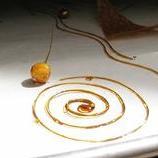3 hours ago, pbear said:Now that I understand the question, I'm intrigued by the possibility this might actually work. MIGHT. Meaning, developing commercial yeast as a stable culture, similar to sourdough but mild. What captures my imagination isn't saving ten cents per batch in yeast but rather whether it will function like a levain, building in flavor as well as a rise. It'll take me a week to do the test. I started tonight. I'm gonna put the culture through six generations of pare-and-rebulld. Will report back on how it bakes out in a tried-and-true recipe.
FYI, Norman, if nothing else, understand you absolutely must incorporate a chill phase into the process. If you don't, as several others have mentioned, you will end up with a sourdough starter.
Hops are the key. Old recipes for non-fermented yeasts always use hops because it prevents development of the bacteria you don't want. Generally, pure yeast-making was tied to commercial beer brewing back a few centuries. Before refrigeration, individuals brewed beer, and made bread from sourdough starters. Cake yeast needs to be kept fairly cool and has always been a product of a larger brewery/bakery complex -like one might find in/near a medieval village around a castle.
Use of pate fermentee is pretty common in all sorts of traditional breadmaking, including your romanticized vision of Bedouin life. Students in reputable culinary schools learn about it in the first week of bread class long before they make their first sourdough starter from yeast in the air. That said, it doesn't stay alive enough to leaven for very long, and gives a distinct sour flavor. It is very commonly used in the sourest of sourdoughs.
But, all of that said, traditional peasant breads were all very sour, and made from rougher ground grains. And, they did not always have access to butter or oils -certainly not refined sugar, which wasn't cheap until the 1820s. If you take a look at Pollan's Cooked, you will see examples of people making breads in traditional ways and they are all fermented. This business of having bread just leavened with yeast, without fermentation, is a modern phenomenon -Pollan discusses the implications of this situation.





